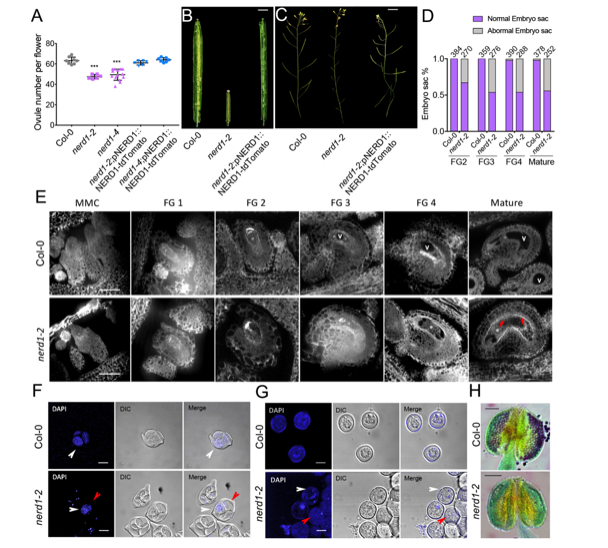Regulation of ovule number
Ovules are the precursors of seeds in flowering plants. Each ovule contains an egg cell and a central cell that fuse with two sperm cells during double fertilization to generate seeds containing an embryo and endosperm. Since pollen is produced in excess in most flowers, the number of ovules produced during flower development determines the maximum number of seeds that can be produced by a flower. We are using natural variation in ovule number in Arabidopsis accessions to find new regulators of ovule number. Surprisingly, naturally occurring Arabidopsis accessions have a range of ovule number from 39-82, or a two-fold difference between the lowest and highest. We used a genome-wide association study to predict regions of the genome that are important for regulating ovule number during flower development. So far, we validated that NERD1 is a positive regulator of ovule number and also influences flower and branch number in Arabidopsis plants and could act as a yield gene (Yuan and Kessler, 2019).



Variation in ovule number in dissected Arabidopsis fruits.
Average ovule number per flower in Arabidopsis Accessions ranges from 39-82!
Manhattan plot of genotype-phenotype associations. 2 of the associated loci are highlighted below. At3g51050 encodes NERD1 (NOVEL ENHANCER of ROOT DWARFISM 1).

nerd1 mutants have reduced ovule number and reduced fertility